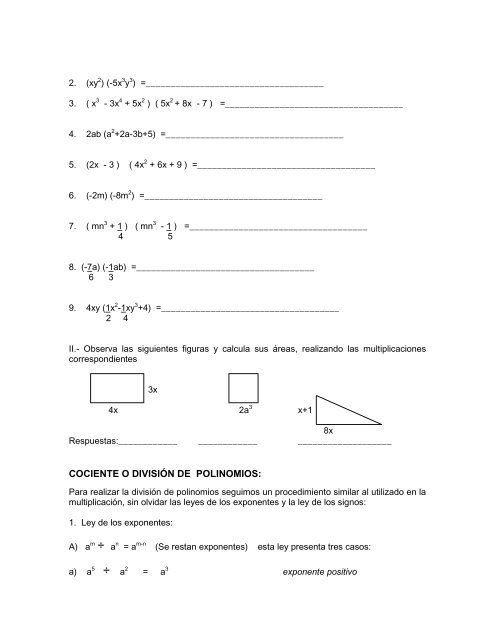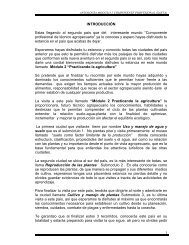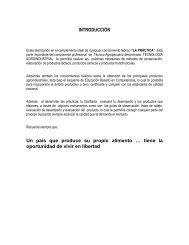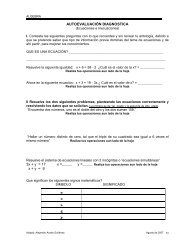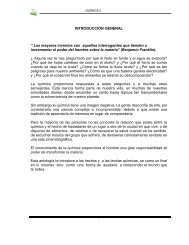GUÍA DIDÁCTICA DE ÁLGEBRA 1a parte.pdf - CBTa 233
GUÍA DIDÁCTICA DE ÁLGEBRA 1a parte.pdf - CBTa 233
GUÍA DIDÁCTICA DE ÁLGEBRA 1a parte.pdf - CBTa 233
Create successful ePaper yourself
Turn your PDF publications into a flip-book with our unique Google optimized e-Paper software.
2. (xy 2 ) (-5x 3 y 3 ) =____________________________________<br />
3. ( x 3 - 3x 4 + 5x 2 ) ( 5x 2 + 8x - 7 ) =____________________________________<br />
4. 2ab (a 2 +2a-3b+5) =____________________________________<br />
5. (2x - 3 ) ( 4x 2 + 6x + 9 ) =____________________________________<br />
6. (-2m) (-8m 2 ) =____________________________________<br />
7. ( mn 3 + 1 ) ( mn 3 - 1 ) =____________________________________<br />
4 5<br />
8. (-7a) (-<strong>1a</strong>b) =____________________________________<br />
6 3<br />
9. 4xy (1x 2 -1xy 3 +4) =____________________________________<br />
2 4<br />
II.- Observa las siguientes figuras y calcula sus áreas, realizando las multiplicaciones<br />
correspondientes<br />
3x<br />
4x 2a 3<br />
8x<br />
Respuestas:____________ ____________ ___________________<br />
COCIENTE O DIVISIÓN <strong>DE</strong> POLINOMIOS:<br />
Para realizar la división de polinomios seguimos un procedimiento similar al utilizado en la<br />
multiplicación, sin olvidar las leyes de los exponentes y la ley de los signos:<br />
1. Ley de los exponentes:<br />
A) a m ÷ a n = a m-n (Se restan exponentes) esta ley presenta tres casos:<br />
a) a 5 ÷ a 2 = a 3 exponente positivo<br />
x+1


